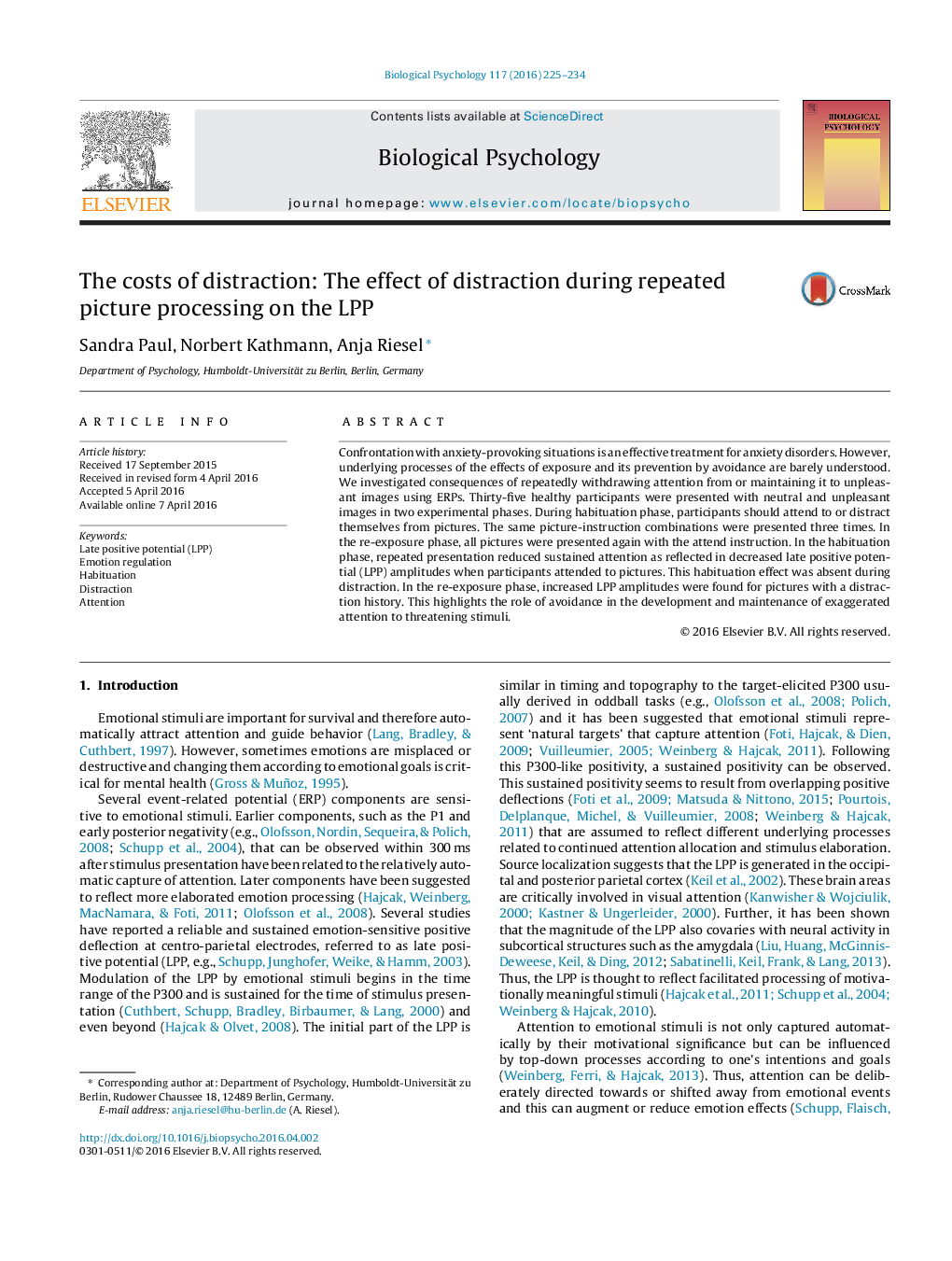| Article ID | Journal | Published Year | Pages | File Type |
|---|---|---|---|---|
| 920715 | Biological Psychology | 2016 | 10 Pages |
•Effects of distraction during repeated exposure were examined using the LPP.•The LPP decreased (habituated) during repeated exposure when pictures were attended.•Distraction prevented habituation in the LPP during repeated picture processing.•Previous distraction compared to attention increased the LPP during re-exposure.•Prior distraction may lead to exaggerated attention to feared stimuli.
Confrontation with anxiety-provoking situations is an effective treatment for anxiety disorders. However, underlying processes of the effects of exposure and its prevention by avoidance are barely understood. We investigated consequences of repeatedly withdrawing attention from or maintaining it to unpleasant images using ERPs. Thirty-five healthy participants were presented with neutral and unpleasant images in two experimental phases. During habituation phase, participants should attend to or distract themselves from pictures. The same picture-instruction combinations were presented three times. In the re-exposure phase, all pictures were presented again with the attend instruction. In the habituation phase, repeated presentation reduced sustained attention as reflected in decreased late positive potential (LPP) amplitudes when participants attended to pictures. This habituation effect was absent during distraction. In the re-exposure phase, increased LPP amplitudes were found for pictures with a distraction history. This highlights the role of avoidance in the development and maintenance of exaggerated attention to threatening stimuli.
